Welcome to the third and final part in our mini-series:
How to develop your balance for your cross country skiing holiday.
How are the balance exercises going? Hopefully, you are noticing positive changes. From personal experience, preparing to ski right up to your holiday is worth it.
I hope these blogs are giving you some ideas and inspiration.
A quick recap and why work on balance?
In the previous blogs, we first looked at two balance self-tests that also work as balance exercises.
In part 2, we considered stability and its contribution to balance, keeping the pelvis stable when on one leg and while rotating the trunk. You may have noticed that balance exercises also challenge some of our muscles quite effectively (glutes!). We saw that a stable trunk and pelvis enable us to work the arms and legs effectively.
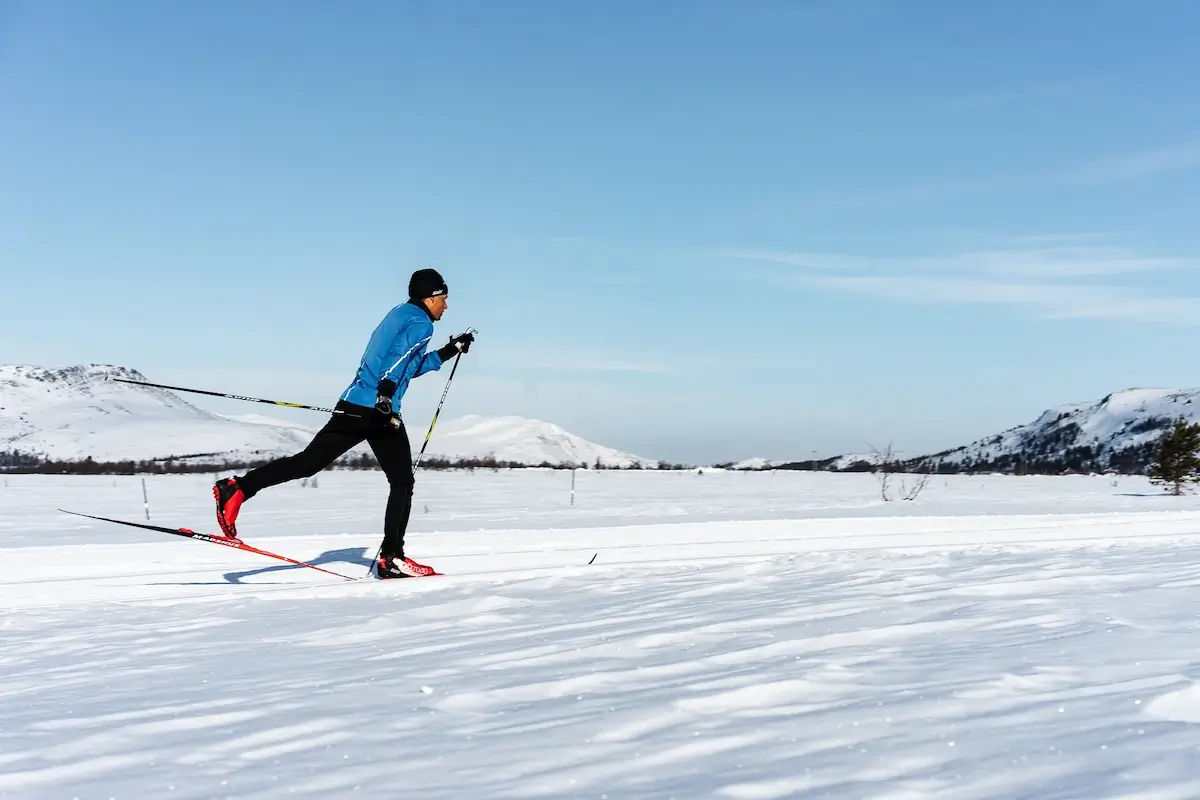
Balance and alignment
In this third part, we’ll look at the alignment of the foot, knee, and hip and add more dynamic balance exercises. There is also a new self-test – so you can see how far you have come 😊
As with the previous posts, these suggestions help you prepare for cross country skiing. They are not intended as a diagnosis or treatment for any conditions.
If you have concerns, please see your GP or a Chartered Physiotherapist.
Alignment and cross country skiing
When skiing, we aim to glide on a flat ski (unless we put the ski on its inside edge to snowplough, and then we want to be able to control the angle and pressure). If you feel the ski washing out to the side instead of maintaining a straight line, most apparent when we ski outside the tracks, you may be rolling the knee inwards. It is pretty easy to spot this in someone else – you’ll see them ski “knock-kneed”.
It is also essential to look after our knees. We protect the knee from twisting forces by controlling rotation in the leg and any tendency to let the knee drift in (most commonly).
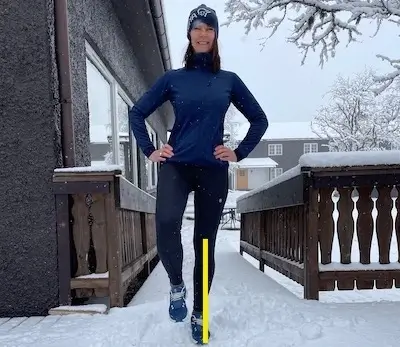
What is good alignment in the leg?
As in the photo above, we want to keep the foot (second toe), knee and hip lined up.
I don’t like to show the wrong alignment but so we are clear, see the image below.
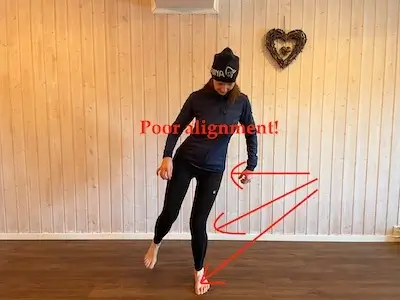
Alignment self-check
As a self-check with these exercises, you can use a mirror to see if your hip, knee and second toe align as you squat or lunge. You can also look down to check that the knee stays over the second toe as you squat or lunge.
Can you maintain this with repetitions, or does the knee come in when you are tired?
Are there any differences between left and right?
the exercises
Single balance and endurance
Stand on one leg in a squat position with hip, knee and foot well aligned. Can you write your name in the air with your free foot? And keep that nice alignment? Can you write your first name and surname (+ any middle names?) while on one leg and maintain a good alignment? How about on the other leg?
If this is easy, it’s time to add more of a challenge by standing on an uneven or wobbly surface, such as a cushion, half foam roller or Bosu. Remember that we don’t want to hurt ourselves – we are getting ready for an exciting holiday, so while a challenge is good, we want to be safe.
Single leg – progressing dynamic balance
Standing on one leg, throwing and catching or bouncing a ball – against a wall or with a partner. How long can you stay on one leg? Can you hop and adjust your balance as needed? How about on the other leg?
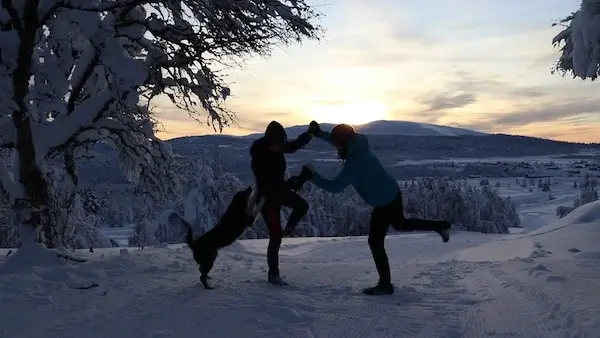
More dynamic balance on one leg!
This reflects our classic cross-country skiing – dynamic balance on a gliding ski. Stand on one leg, knee and ankle slightly flexed. Adopt a “running position” with the unweighted leg and opposite arm bent. Move the opposite arm and leg in a running style. How much ankle flexion can you achieve on the standing leg? (That will be familiar to anyone who has skied with me 😂) To adapt this for cross country skiing, straighten the leg when it is behind and have the sole of the foot parallel to the floor.
Again, maintaining the foot and knee alignment on the standing leg is critical.
If this is easy, with all the appropriate warnings, you can try this on an unstable surface, such as a cushion, Bosu or half foam roller. A half foam roller mimics a ski really well in this exercise.
“Old man shoe test”
I’m not sure about the name, but this test is challenging! I found this test/exercise in Built to Move by Kelly and Julie Starrett. If you pass this test, my work is done 🙂 (not entirely true; I’m sure we all want to be the most well-balanced, dynamic skiers we can be 😎)
In a clear space or close to a wall or countertop if needed,
Place a pair of shoes and socks on the floor before you.
Standing on one leg, can you bend down, pick up a sock, and put it on? Then, do the same with the shoe without putting your foot down. And then on the other side?
Congratulations, you have excellent balance!!
Yikes, this is all hard!
If keeping this hip, knee, and foot alignment is challenging, I suggest you speak to a physiotherapist or a qualified Pilates teacher. They will be able to help you with specific exercises to look after the health of your joints.
We want to train our awareness, balance and muscle endurance in the correct alignment. Remember, we get better at what we practise ⭐.
More on joint mobiity
As I wrote these posts, I was reminded of one fairly common issue reported by skiers – a stiff lower back after skiing. This can be caused by reduced hip mobility, particularly the loss of hip extension. People may also experience low back stiffness after standing or walking. Reduced hip mobility can influence our skiing and lives in other ways. Mobility, in all our joints, and our ability to balance are closely related.
The way we live can now involve a lot of sitting and limit how we move our hips: think sitting at work, driving, cycling, relaxing on the sofa – tricky to avoid without some planning.
This tightness can mean that when we ski, we repeatedly push our lower back into extension (hollowing the lower back). The lower back then complains. If you recognise this, I encourage you to see a Chartered Physiotherapist. With their help, you can get to the bottom of the issue, hopefully, avoid discomfort on your holiday and look after your joint health.
The Starretts devote a whole chapter of their book, Built to Move, to hip mobility and have some excellent practices for promoting hip mobility.
Katy Bowman, a biomechanist, also has excellent (free) information on her website Nutritious Movement, and on Youtube.
I hope you have enjoyed these posts and are inspired to “Get Ready to Ski!” If you have any questions, please get in touch.
Remember – practice and consistency will get you there 🙌
We look forward to seeing you at Venabu soon, and here’s to having fun on our cross-country skis!
Resources
Katy Bowman’s website Nutritious Movement, and Youtube channel.
Kelly Starrett and Juliet Starret, 2023, Built to Move, Orion Spring, London.
The Starretts’ article in The Guardian (you can tell I’m impressed with their work). There is lots of overlap in this article with moves that work for cross country skiing: glutes, hip extension, activating our feet, balance, getting up off the floor 😉
They also appeared on the Rich Roll podcast.
My previous blog on preparing for cross country skiing.
With thanks to Neil Maclean Martin of La Clinique du Sport, Chamonix.
Neil’s programme SkiFit is a very effective way to get ready for your skiing holiday. This is the programme I’ve used for a number of years. We don’t have any commercial links with SkiFit.
“Excellent guiding team!”
“An amazing week. The whole guiding team was excellent and very patient for me as a beginner. Music in the evening and a relaxed, friendly atmosphere. Hope to be back soon.”
Josephine (UK)
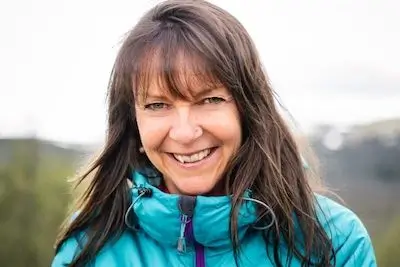
Joy O’Flanagan is an experienced BASI Nordic Ski Instructor and International Mountain Leader. She is also a movement specialist: a qualified physiotherapist and Pilates instructor.

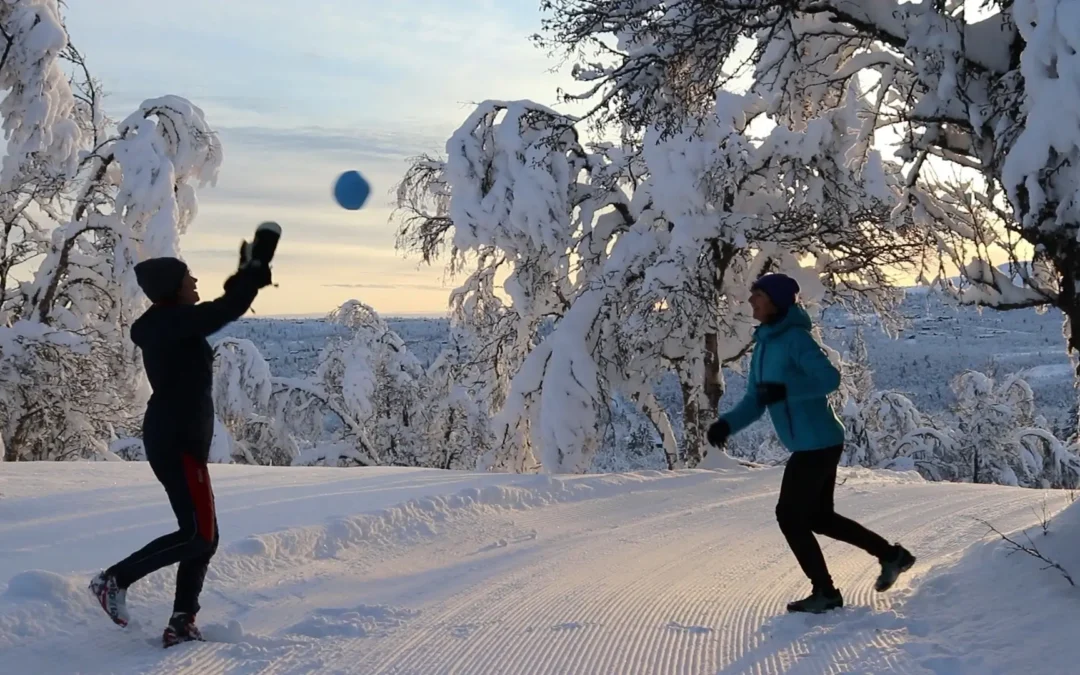
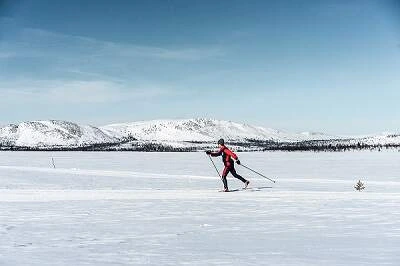
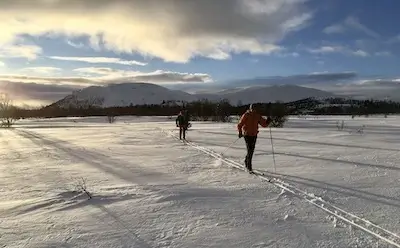
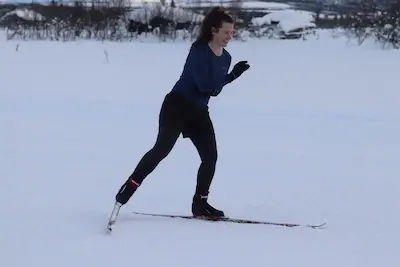
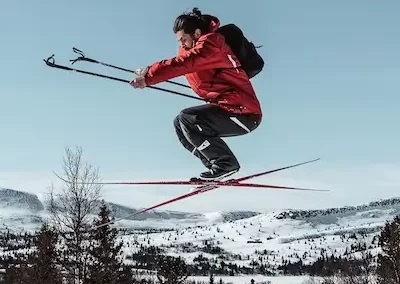
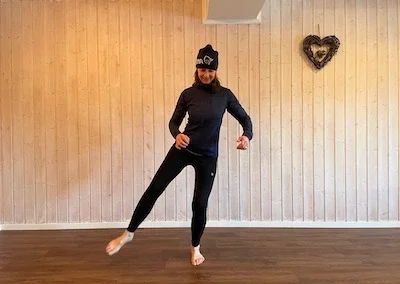
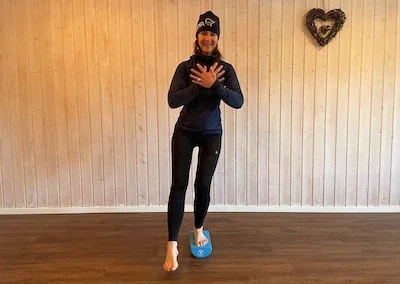
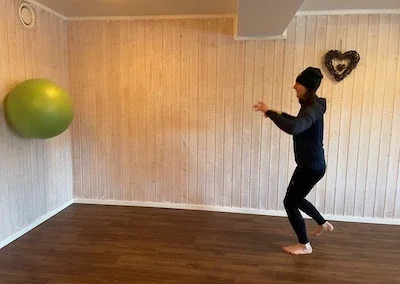
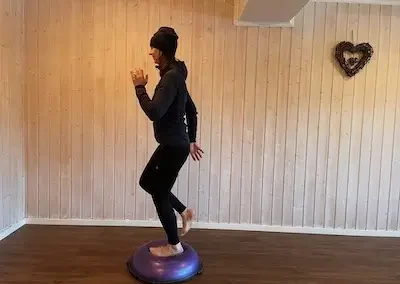
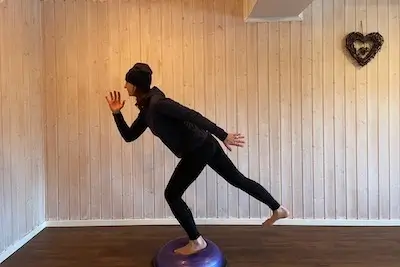
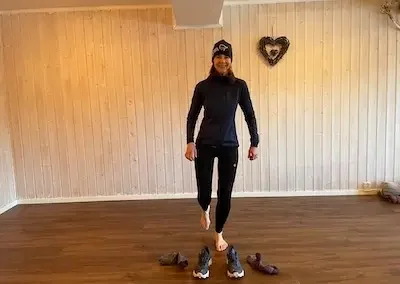
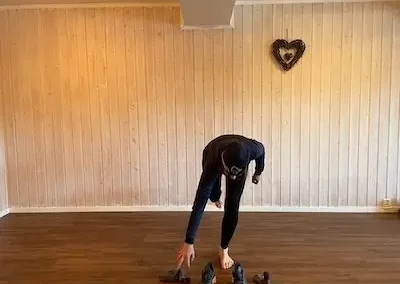
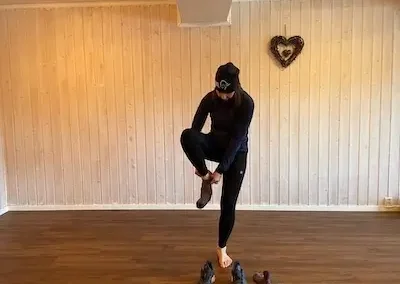
Recent Comments